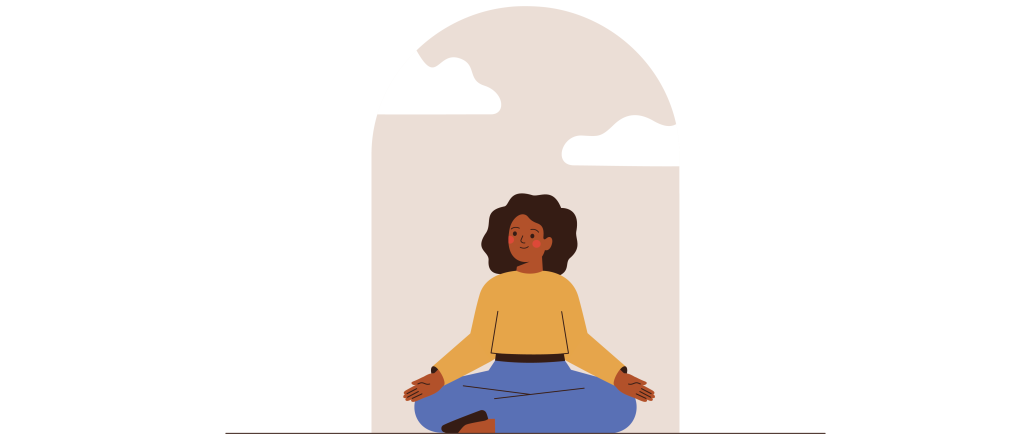How does mindfulness meditation work?

The first thing to say is that there are lots of types of meditation and mindfulness is just one type of meditation. Meditation in its broadest sense is just practising some kind of mindset. This could be any kind of mindset; for example, a person recovering from alcohol misuse might set aside a minute each morning to talk to their mirror reflection, repeating ‘I choose to be sober today’. This is a kind of meditation of a small part of a sobriety mindset.
So what is a mindfulness mindset? A mindfulness mindset aims to create a respectful relationship between the goal oriented parts of you and the needs of your brain and body (e.g. a respectful relationship between the part of you that wants to finish a piece of work and another part of you that’s feeling of stress about something in your personal life). Mindfulness meditation practices this mindset in a three part process, first; focusing on something, usually your breathing, second; acknowledging any thoughts, feelings or sensations that intrude on focus and third; refocusing on whatever you were originally focusing on.
Let’s go back to that triad that; focus, acknowledge, refocus is something that we all do to a greater or lesser extent when trying to do something like work or study. However, mindfulness can help by teaching a respectful balance between listening to the part of you that is trying to tell you something and being able to focus on the thing that you wanted to do. Often people go to extreme ends of these two things.
Some people, instead of acknowledging thoughts, feeling or sensations, people try to ignore them completely. They might ignore a feeling of sadness, push away a stressful thought, or try to put an aching knee to the back of their mind. If done over a long period of time, it can contribute to numbing leading to apathy or depression or perhaps permanent damage to that knee that was trying to send a red flag.
At the other extreme, a person might be entirely overtaken by thoughts, feelings or sensations and end up becoming completely distracted. This might look like forgetting you were in the middle of something because of a spiralling anxious thought about an event the next day. This end of the spectrum can contribute to things like anxiety or panic attacks. Sometimes an individual will alternate between these two ends of the spectrum, making life very difficult.
So what do I mean by focus then acknowledge? Most people have a decent idea of what it means to focus on something but acknowledgement is a little bit more vague. Acknowledgement just means actively recognising the presence of the thought, feeling or sensation, it could be something simple like thinking ‘Oh a feeling’. But importantly, acknowledgement also means you don’t engage further than. Engaging over much can look like arguing with the thought or spending time theorising about why the feeling is there or thinking about the circumstance that lead to a certain sensation.
So mindfulness meditation helps you practise balance between listening to thoughts & feelings and focusing on goals. And in the long run, it can help some people with some of those tricky outcomes mentioned.
Did you find that useful? Take a look at our courses or subscribe to our mailing list below.
